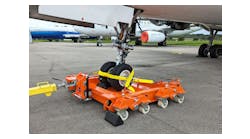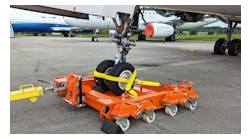A Timeline of Chaos at Newark Airport: Inside the Terrifying Last 2 Weeks, and How We Got Here
With a trio of air traffic control equipment failures in little more than a week, Newark Liberty Airport has become the poster child for the problems plaguing the nation‘s airports.
The meltdown prompted government and airline officials to take to Sunday morning news talk shows to reassure nervous travelers that flying from Newark is still safe.
The reassurances came after the airport experienced its third similar equipment failure Sunday morning. The airport also had incidents on April 28 and May 9, affecting communications and radar displays.
- READ MORE: Newark airport halts flights Sunday as system fails again, traffic control problems continue
The failure of decades-old equipment led the Trump administration to announce a sweeping plan to modernize air traffic control equipment in three years and provide incentives to restore the decimated ranks of air traffic controllers.
Experts described what happened at Newark as a perfect storm of an existing air traffic controller shortage, routine schedule runway replacement and the failure of ancient equipment.
The lead-up
March 2024: the Port Authority of New York and New Jersey, which owns and operates the airport, approved a $134 million project to repave one of the two main runways, which was closed in April of this year as part of that project.
June 2024: The Federal Aviation Administration (FAA) relocates air traffic control of the airspace around Newark airport from New York to Philadelphia, due to continued traffic demand in the busy Northeast Corridor.
January 2025: Port Authority officials announce another record-breaking year for air travel in 2024 at its three airports, including Newark.
READ MORE: Newark airport uses floppy discs, and more troubling facts about FAA’s crumbling system
The meltdown
April 28: Air traffic controllers lose radar images and communications with aircraft for 90 harrowing seconds at the Philadelphia TRACON (terminal radar approach control) center that serves Newark airport. Five air traffic controllers, who controllers union officials praised for “saving the day,” take trauma leave from their jobs.
That incident was blamed on two things:
- A telecommunication line that transmits data and audio to air traffic controllers failed, which was traced to a copper wire.
- A radar feed that transmits data from an FAA facility, then to the Philadelphia TRACON and finally to Newark airport, also failed. The FAA and Washington, D.C.-based National Air Traffic Controllers Association confirmed the failures.
The fallout was immediate.
Authorities shuts down Newark airport for two hours while the FAA works on the issue. Over 65 flights are diverted elsewhere, 150 canceled and 350 delayed.
May 2: United Airlines announces it is canceling 35 daily flights from its schedule of 328 flights to and from Newark airport. In a memo to customers, CEO Scott Kirby cites air traffic control staffing and technological problems including the April 28 outage.
May 5: New Jersey Gov. Phil Murphy and members of the state’s congressional delegation call for immediate action to add more controllers from less busy airports and for immediate upgrades to air traffic control equipment.
May 7: FAA officials commit to increasing air traffic controller staffing and technology improvement. They include adding three new, high-bandwidth telecommunications connections to a New York center that processes radar data for Newark, replacing copper telecom connections with new fiber optic lines and deploying a temporary backup system to the Philadelphia control center to provide redundancy.
May 8: President Donald Trump and U.S. Transportation Secretary Sean Duffy announce an unprecedented plan to rebuild the nation‘s air traffic control system. The program has no cost estimate and calls for completion in three years. It does have support from major airlines, labor unions, airport operators and aircraft manufacturers.
It calls for rebuilding 15 control towers and 15 TRACON centers, building six new state-of-the-art air traffic control coordination centers and replacing thousands of pieces of old equipment. The program requires congressional approval and a budget appropriation.
May 9: Radar screens at Newark go dark again Friday morning after another 90-second telecommunications outage affects communications and radar display at the Philadelphia TRACON, which serves Newark Airport.
Radio communications quickly return, but many radar scopes in the facility do not, controllers are heard saying on a publicly available recording of the air traffic channel for Newark approach flights.
May 10: “Saturday Night Live” takes a jab at Newark airport during its “Weekend Update” news segment.
“A new report shows that there have been at least nine incidents at Newark Airport, where air traffic controllers have lost contact with planes that were about to land,” host Colin Jost said.
Then he deadpanned: “But luckily it’s Newark so planes can just follow the smell.”
May 11: For the third time in 14 days, the FAA confirms another telecommunications outage has affected communications and radar display at the Philadelphia TRACON, leading the FAA to post a 45-minute ground stop on air traffic at the airport Sunday morning.
Also May 11: Airline and federal officials say on Sunday morning news talk shows that it‘s safe to fly in and out of Newark Airport, citing backup systems and other redundancies that are available in case of failures.
U.S. Transportation Secretary Duffy tells ”Meet the Press” moderator Kristen Welker that he flies out of Newark Airport and that it‘s “safe to fly.”
That segment was recorded on Friday.
“This is a system that‘s old, 25 years at best, sometimes 50 years old. The congress and the country haven‘t paid attention of it,” Duffy said. “Now the lights are blinking, and the sirens are turning, what you’re seeing in Newark will happen in other places in the country.”
Kirby, the United CEO, appears on “Face The Nation,” assuring there are backup systems available to pilots, according to a transcript.
His segment was recorded on Saturday.
"It absolutely is safe at Newark and in the entire country. And the reason is when these kind of outages happen, we train for them," Kirby said.





